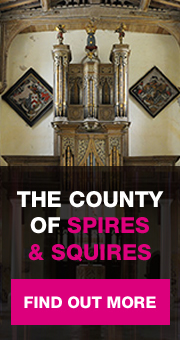The church is now looked after by The Churches Conservation Trust. One of the best Norman Churches in Britain. It’s sophistication in design and ornament is a reflection of the national importance of Northampton in the Middle Ages. It was a Royal seat and it was here that Thomas a Becket trial took place in 1164. Built on a large Saxon site near the castle the church was built circa 1170 and is associated with the 1st Earl of Northampton, Simon de St. Liz. Externally the striking feature is the continuous arcaded frieze topped by a series of grotesque corbels that stretch along both sides of the basilica. This was subject to a sensitive restoration by Sir G.G. Scott in 1850 which also involved the rebuilding of the East end. Here there is a symmetrical arrangement of Norman round headed windows with an unusual central semi circular column buttress. Similar buttresses are to be found in the lower part of the Norman tower which also boasts 12th century carvings ( the upper part of the tower dates to the 17th century ). Internally it is the march of fat Norman columns towards the altar with their lavish contemporary carvings which is particularly striking. The tower arch is almost shamelessly rich in sculptural effect, beneath it stands the 15th century font with Scott’s painted cover. In the church you will encounter the memorial bust to William Smith ( creator of modern geology ), to John Smith(d. 1742) the mezzotint engraver – a wall tablet by Hunt of Northampton – and Matthew Noble’s tablet to the county historian George Baker ( d. 1851)
Please refer to the Glossary for any terms in the text that you are unfamiliar with.







